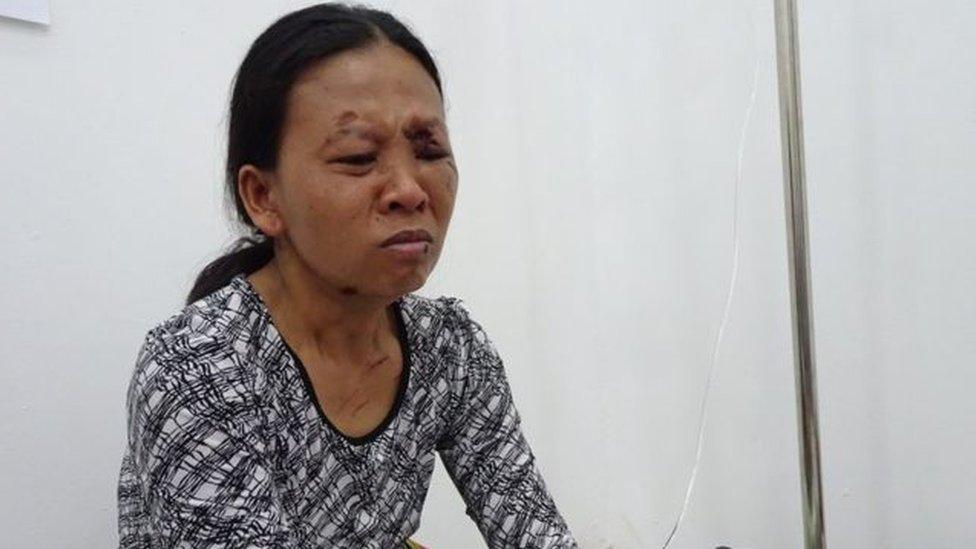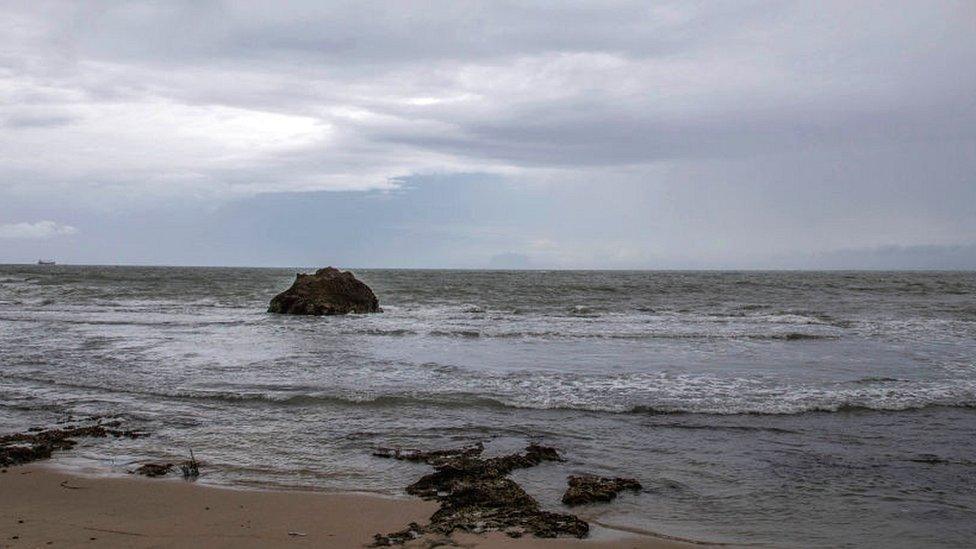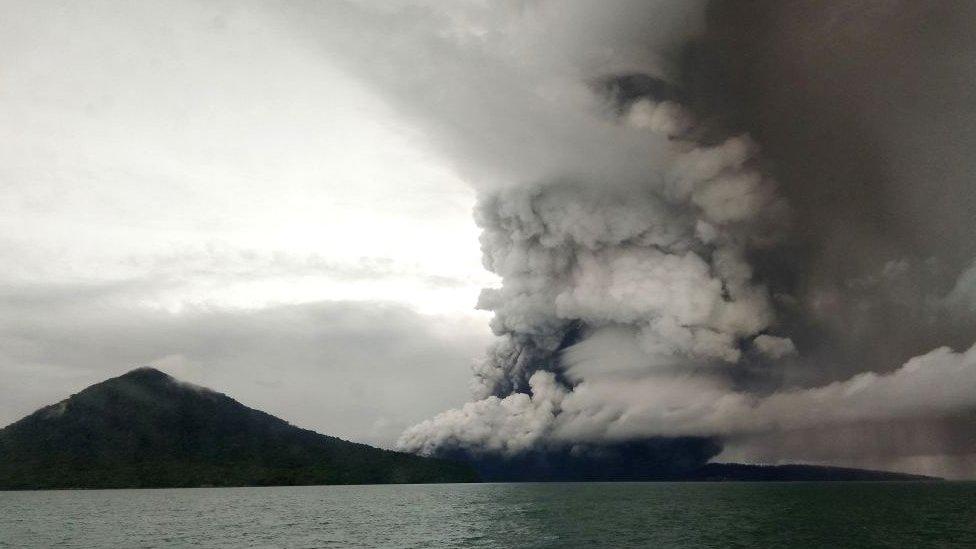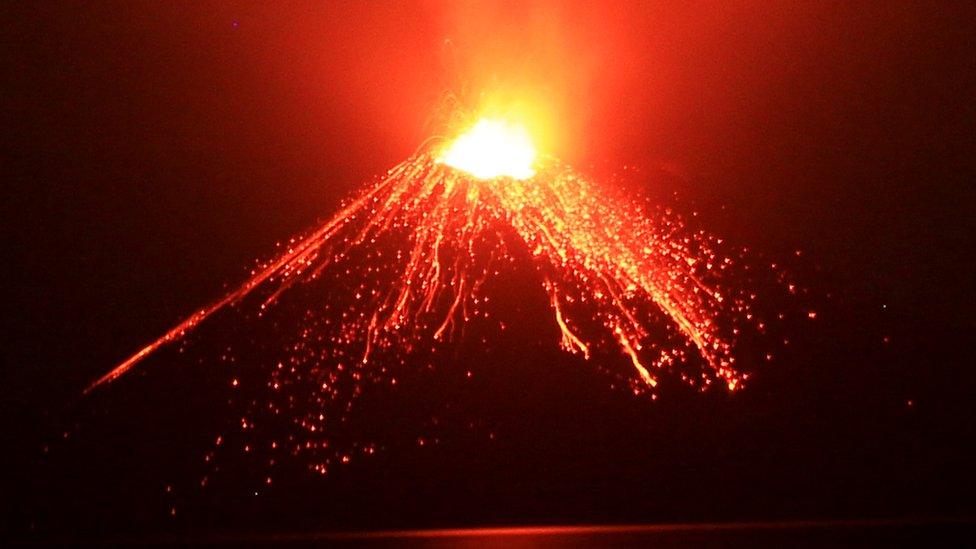Anak Krakatau tsunami: The moment a child was swept from her mum
- Published

Emilia survived but was left with serious injuries
Hundreds of people have been killed by a tsunami that struck Indonesia last weekend after the Anak Krakatau volcano erupted. One woman survived to tell the tale, but told BBC News Indonesia about the horrifying moment her five-year-old child slipped from her grasp and into the sea.
Emilia was holding her daughter in her hands when the waves hit.
"I was holding my child, she was still calling me mum," said Emilia, identified only by her first name.
But as wave after wave continued sweeping into shore, she found herself unable to hold on any more.
"I was so weak, my strength was gone. I could no longer breathe... I could no longer hold my girl," she said. "I [grabbed] her shirt collar, but it [tore away].

Emilia's daughter slipped from her grasp into the sea
Emilia herself barely survived.
She was dragged into the sea but was eventually pushed to shore by waves. Both her and her husband survived, though both were severely injured - though her child still remains missing.
"My child still can't be found... my only child."
'We are still traumatised'
Emilia and her family lived on the island of Sebesi - one of the largest islands in the Sunda Strait - located near the Anak Krakatau volcano.
Sebesi island is one of several areas that was badly hit by the tsunami, which was believed to have been triggered after volcanic activity at Anak Krakatau caused undersea landslides, which in turn generated killer waves.


She is one of 90 people who have been hospitalised at the Bob Bazar hospital in the nearby town of Kalianda.
Nursanah, another tsunami victim at the hospital, says that though they may have survived, the future ahead remains uncertain.
"We are still traumatised, especially when we hear Krakatau [rumbling]," Nursanah, who was herself rescued from a forest, told BBC News Indonesia.
"We have no home, where should we cook our food? We have no idea what kind of help we should ask [for]."
Life after the tsunami
On Saturday, vast waves engulfed coastal towns on the islands of Sumatra and Java leaving at least 430 dead and more than 150 missing.
It destroyed hundreds of buildings, sweeping away cars and uprooting trees in several popular tourist destinations.
At least 16,000 people still remain displaced and rescue workers are struggling to reach remote areas of the country that have been hit by the tsunami.
Thousands of people are living in temporary shelters like mosques of schools, with dozens sleeping on the floor.

Indonesia is prone to tsunamis because it lies on the Ring of Fire - the line of frequent earthquakes and volcanic eruptions that circles virtually the entire Pacific Rim.
In September, more than 2,000 people died when a powerful earthquake struck just off the central Indonesian island of Sulawesi, setting off a tsunami that engulfed the coastal city of Palu.
- Published27 December 2018

- Published24 December 2018

- Published24 December 2018
- Published24 December 2018
